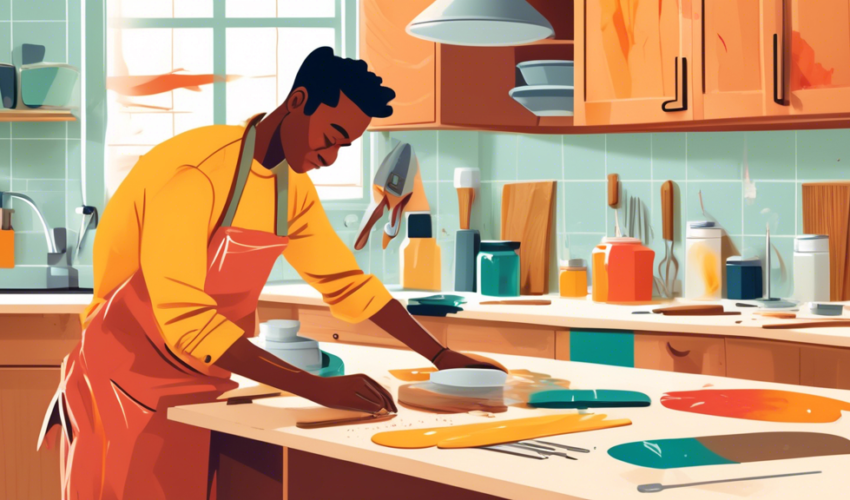Introduction to Cabinet Surface Repair
Over time, the cabinets in your home may show signs of wear and tear. Whether they’re in the kitchen, bathroom, or any other space, surface damage can detract from their overall appearance. Fortunately, most common issues such as scratches, dents, and watermarks can be repaired at home with simple tools and materials. This article will guide you through easy fixes for various types of cabinet surface damage.
Identifying Common Types of Cabinet Damage
Before you can fix the damage, you need to identify what kind you’re dealing with. Common types of cabinet surface damage include scratches, water damage, burns, peeling laminate, and loose or peeling veneer.
Scratches
Scratches can appear on cabinet surfaces from daily use or accidents. They can vary in depth and severity and are most noticeable on cabinets with a clear finish or darker stain.
Water Damage
Water damage can cause discoloration, warping, and swelling on cabinet surfaces, primarily when they are situated near sinks or dishwashers.
Burns
Accidental burns—from a forgotten iron, for example—can leave scorch marks or deeper charred areas, especially on wooden cabinets.
Peeling Laminate
Laminate cabinets can peel due to age, heat, or incorrect application. This often results in a tatty appearance, exposing what’s underneath.
Loose or Peeling Veneer
Similar to laminate, veneer can begin to peel or lift, especially along the edges of cabinet doors and drawers.
Basic Repair Techniques for Cabinet Damage
Each type of damage typically requires a specific repair strategy. Below are some general methods that can help fix each problem effectively.
Repairing Scratches
For minor scratches, a simple touch-up marker or crayon that matches the cabinet’s color can be used to fill in the scratch. For deeper scratches, you might need to fill them with wood putty before applying a matching stain and finish.
Fixing Water Damage
If the water damage is minimal, you can sometimes restore the cabinet surface with fine-grit sandpaper and a touch of stain or paint. For swollen areas, after sanding, you may need to use a wood filler to level the surface before finishing.
Addressing Burns
Small burn marks can be gently sanded away and then refinished as necessary. Deeper burns might require the use of a router to remove the damaged wood, followed by filling with wood putty or a new piece of wood matching the original in shape and color.
Fixing Peeling Laminate
To reattach peeling laminate, spread a layer of contact cement on both surfaces, press the laminate back into place, and apply pressure. A roller can help ensure a firm bond. Make sure no bubbles or wrinkles form during the application.
Reattaching Peeling Veneer
Similar to laminate, apply a contact adhesive under the peeling sections of veneer. Press down firmly and ensure the entire surface is smooth and well adhered. Heavy books or clamps can be used to keep the veneer pressed down as it dries.
Preventive Measures and Maintenance
Maintaining your cabinets can prevent many types of damage from occurring. Regular cleaning, avoiding harsh chemicals, and using protective pads can extend the life of cabinet surfaces. Additionally, it’s essential to address leaks and spills quickly to prevent water damage and avoid placing hot items directly on the surface to prevent burns.
Conclusion
Cabinet surface damage may seem inevitable, but with the right tools and a bit of know-how, most issues can be easily fixed, restoring your cabinets to their original beauty. Whether dealing with scratches, water damage, or burns, these solutions can help maintain your cabinetry for years to come.

